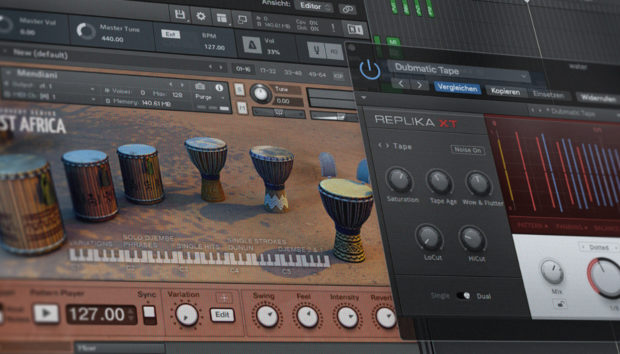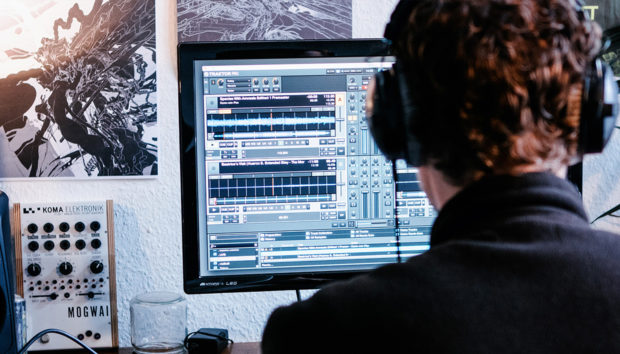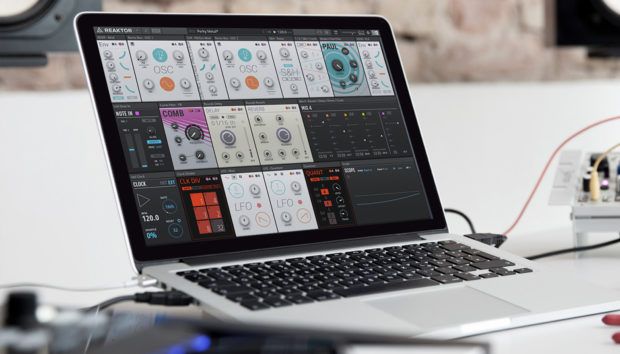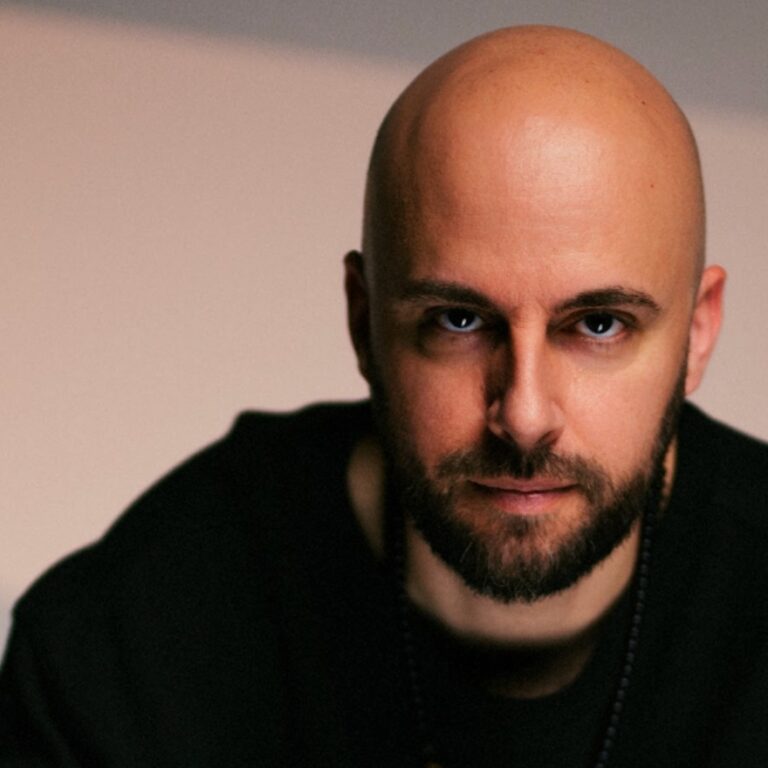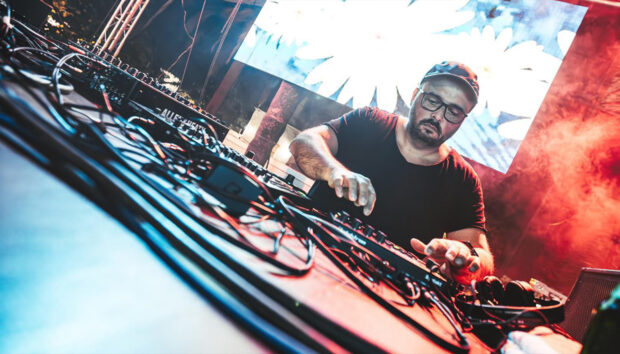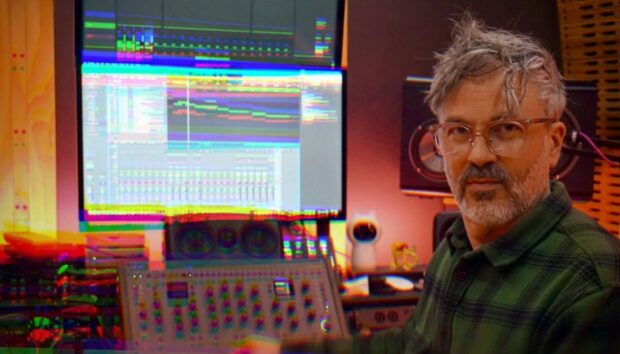When UNER began writing CONTICINIUM, he wasn’t trying to chase a sound or make a comeback. He was confronting grief, silence, and emotional fragmentation – and using Reaktor to find structure inside the chaos. It’s the kind of album that doesn’t try to fit into a genre because the process behind it never did either.
Across eleven tracks, he pulls together fragments from his classical training, modular systems, and club background to build something that feels more like a journal than a record. Reaktor is all over it – from Monark bass foundations and Metaphysical Function textures to unpredictable transitions built with Akkord and Blocks.
Each ensemble serves the album’s emotional architecture rather than any fixed stylistic idea. In this interview, UNER breaks down how that process took shape and what helped him find balance between improvisation, narrative, and restraint.
Jump to these sections:
- The intent behind CONTICINIUM: blurring genres naturally
- Reaktor’s role in genre fluidity and modular sound design
- Why Monark, Akkord, and Metaphysical Function became the sonic spine of CONTICINIUM
- His approach to modular chaos without losing emotional clarity
- The mindset shift that changed how he programs all synths, even traditional ones
- Reaktor as a tool for emotional reflection
What follows is one of the most thoughtful Reaktor interviews we’ve published to date – a deep look at how one of Spain’s most respected producers approached loss, growth, and transformation using nothing but intention and sound. Let’s get into it.
When you started writing CONTICINIUM, did you already know you wanted to blur genres – or did it evolve naturally as you built the record?
When I started working on CONTICINIUM, I didn’t start with the conscious intention of breaking genre boundaries. In fact, I didn’t even intend to make an album. I simply started creating again as UNER. Chrysalis came out of that process, and from there, everything started to flow naturally. I just couldn’t do anything other than be honest.

The music, at that moment, had to reflect the inner fractures, the silences, and the emotional tension. And traditional genres fell short.
House, techno, ambient… those were labels too narrow for what I was feeling. So the album evolved like a living organism, absorbing any sound, texture, or rhythm that helped me describe that emotional landscape.

The fascinating thing was that the process didn’t turn out chaotic and it had its own logic. Composing on the piano would lead me toward nostalgia, Maschine, as always, helped me create rhythmic tension, and Reaktor opened up sonic possibilities. More than eliminating genres, I used them as moldable materials.
And over time, I realized that this absence of limits had become the true identity of the album. That gave me freedom, but also a great responsibility. I couldn’t hide behind a style and everything had to be sustained by emotional clarity and sonic intention.
When you think about modular sound design and genre fluidity, what makes Reaktor the right fit?
Reaktor is, for me, the perfect intersection between precision and chaos. It doesn’t give you a predefined sound or a closed aesthetic. It’s raw material. It allows you to create sonic behaviors and not just “interesting sounds.” You can program how a sound evolves, interacts, collapses, or transforms over time without any repeating pattern, and that’s essential when you want to move between genres without apparent effort.
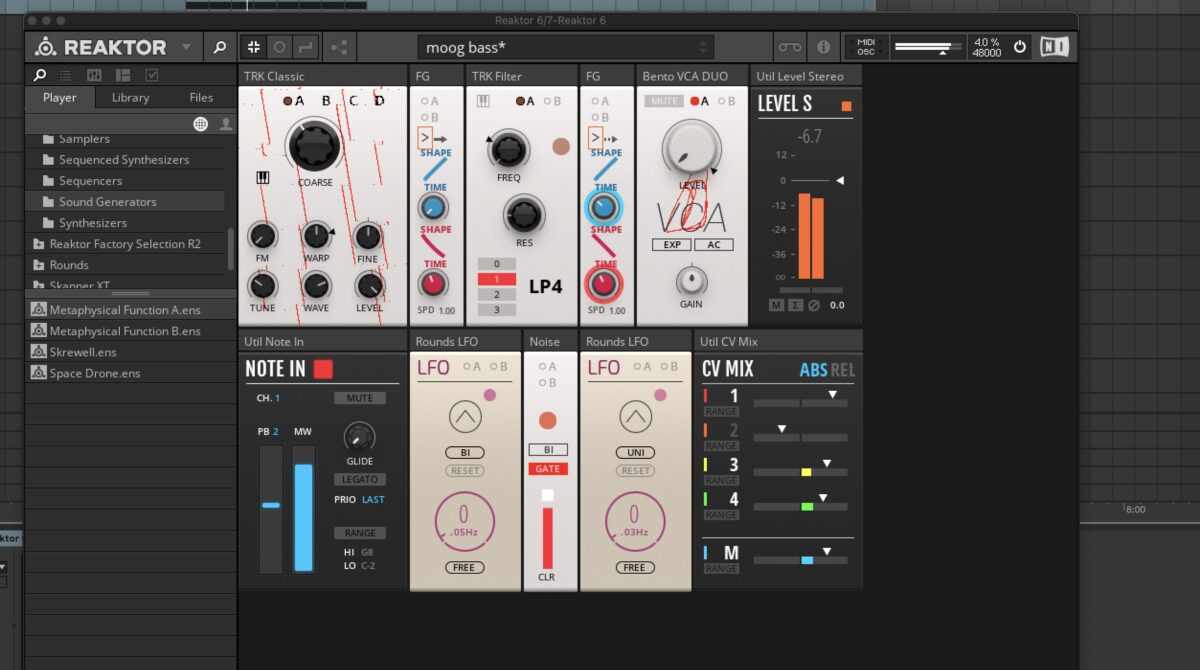
Additionally, its open architecture and user community (brilliant, btw) make it an infinite space for experimentation. You can find ensembles that are true hidden gems or create your own. In CONTICINIUM, this was essential because I wasn’t looking for predictable results. I was looking for processes and those tools allowed me to create living sonic systems that evolved as I recorded them which perfectly reflected my own personal process of transformation during the creation of the album.
Pro tip from UNER: Don’t be scared of dirty sounds. That crackle that seemed annoying at first can end up being the texture that emotionally connects with the listener.
Did you find yourself reaching for any particular Reaktor modules or ensembles repeatedly while working on CONTICINIUM?
Absolutely. Monark was (and has been from the beginning, and will continue to be) a fundamental pillar for my basslines and some leads. Its “analog” rawness allowed me to build a very organic foundation. But what captivated me from the start was its response to modulation. Every small adjustment opens doors to new emotional states of sound.
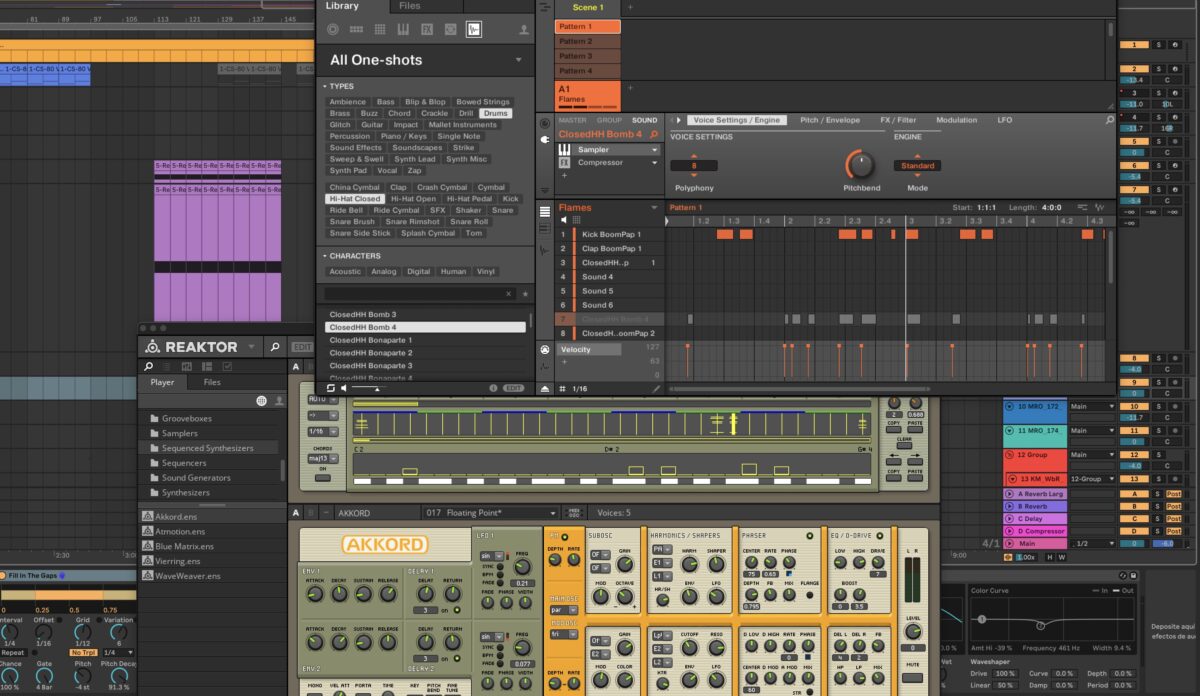
Akkord was also key in several passages where I needed melodic transitions that broke away from traditional harmony. Its ability to generate unpredictable tonal changes made it the perfect ally for moments of tension or emotional suspension. It’s one of those ensembles that, without drawing attention to itself, can change the entire narrative of a track.
On the other hand, Metaphysical Function was one of my main engines for creating atmospheres. I use it as a source of textural uncertainty (noise, erratic oscillations, modulations that seem to breathe). Entire layers of CONTICINIUM are built upon its ability to generate internal movement without the need for obvious rhythms.

And Reaktor Blocks became almost like a lab. There you can experiment with unconventional modulation sources, self-generating patterns, and feedback chains that sometimes lead to wonderful mistakes (I made plenty of mistakes, but some became key moments). Some of those “accidents” ended up being the emotional core of several tracks.
Pro tip from UNER: Turn imperfection into character. Recording outside the studio gives up technical control but can lead to more emotionally compelling results.
How do you stop modular experiments from turning into chaos when you’re still trying to write something emotionally readable?
That’s the real challenge. Before recording any improvisation, I would ask myself what emotion I want to capture. Is it fragility, rupture, hope, anger… that “emotional center” became my anchor so I wouldn’t get lost in experimentation (which is the easiest thing that can happen).
I recorded long sessions knowing that probably only 10% would survive the editing. But that 10% would be pure, real, and deep.
Also, I learned to enjoy the editing process truly.
It’s not just about improvising and hoping for magic. It’s like sculpting when you remove what’s unnecessary until only the essential remains. I focused not just on the “interesting” sounds but on the moments when the machine seemed to speak to me directly, or when the sound broke or exploded into something unexpectedly human. That’s what I was looking for.
Pro tip from UNER: Automate in real time, not on the timeline. Mixing becomes more expressive when you feel the track while shaping it live.
After working heavily with modular tools like Reaktor, do you think differently about traditional synth programming now?
I have to admit that I’ve always been in love with synthesizers and have used them for many years, but it wasn’t until I started my project NIN3S that I began to understand them differently.
Now I no longer see synthesizers as static instruments. Even when I use a classic synth (I still jump back to several of them now and then, like my “old” Korg Prophet) I treat it as if it were a colleague – I mean, I look for relationships and not for results. How can I make a sound truly affect me emotionally? That way makes even the most traditional synthesizers feel like living creative environments.
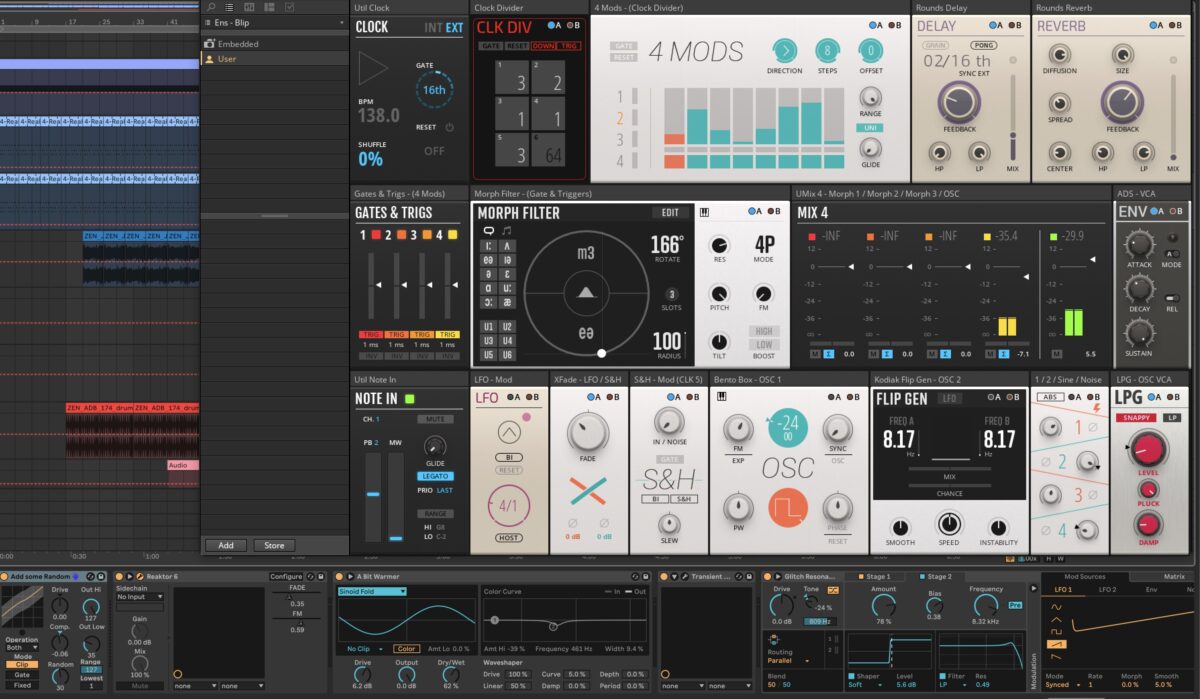
Many times in the past, I made the mistake of focusing just on presets (I guess like most people). But those same presets are often just the starting point.
This leads me to a major difference because now I think of sounds as processes, not fixed states. Everything I program must evolve over time, respond to the context of the track, and change like a human emotion would.
That mindset has given my productions a much greater emotional and narrative depth in my experience.
Was working modularly a way to reflect the emotional complexity you were feeling during the making of the album?
Absolutely.
CONTICINIUM is an album about rupture, grief (mostly), and rebirth. And the controlled chaos of synthesis was the only way to faithfully represent that emotional journey. Each session was an exercise in confronting my own limits, my fears, and my contradictions. What came out of it reflected what I was going through, not just sound.
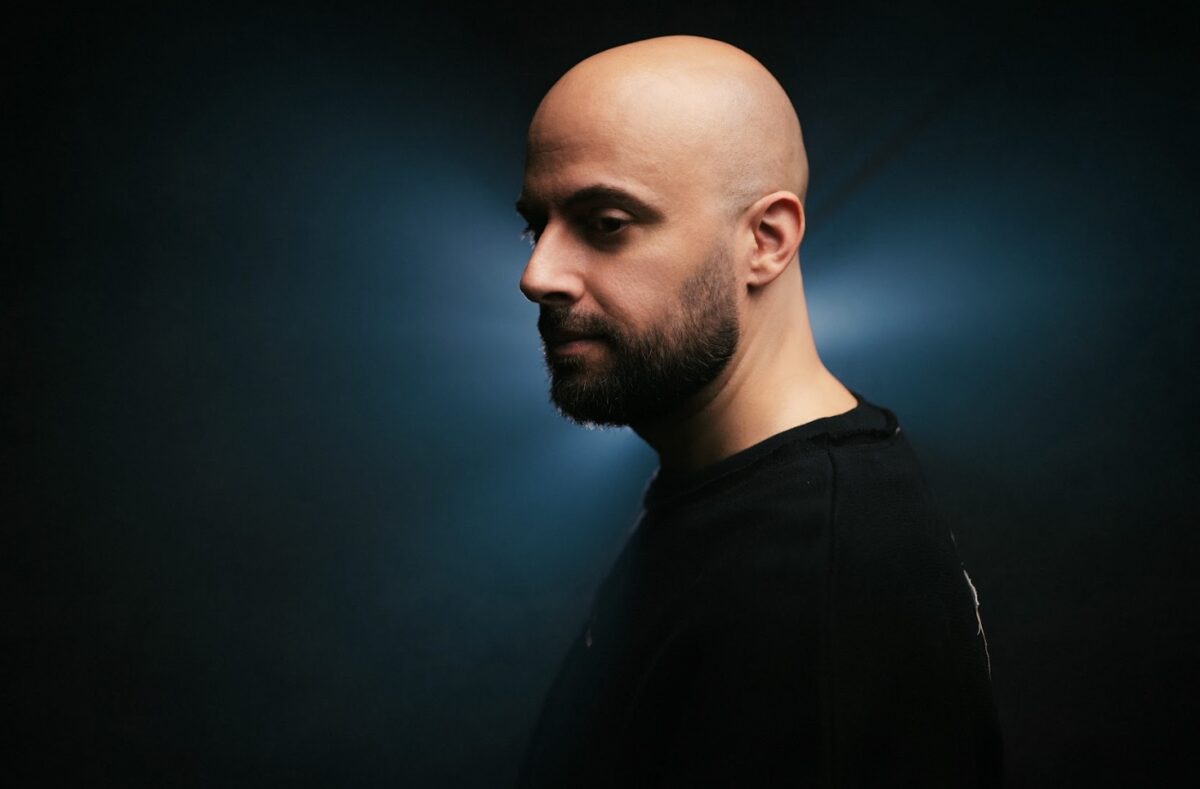
Moreover, that fragility inherent to modular systems (the fact that everything can collapse with a simple adjustment and you have to start again from “chaos” or “nothing”) was the perfect metaphor for my own emotional process. I didn’t know if what I was doing would hold me up or destroy me. But in that uncertainty, I found beauty and peace. Reaktor, for example, wasn’t just a technical tool – it became a space of catharsis and personal reconstruction that perfectly connected with my story.
Pro tip from UNER: Bounce and re-import audio to avoid over-editing. Sometimes the first take holds the real magic.
Wrapping it all up
CONTICINIUM works outside the genre. Every track moves the way it needs to, shaped by tools that leave room for personal detail and creative risk. For UNER, Reaktor wasn’t about showing off modulation tricks – it was the system that made emotional accuracy possible.
If your productions are leaning too hard on style over substance, this record’s worth studying. It shows how much more grounded a track can feel when the source material reflects where you’re actually at. That kind of honesty doesn’t come from presets – it comes from learning how to build your own system and knowing what you’re trying to say before you hit a record.
Reaktor gave UNER a way to stay present in the process without smoothing over the tension. It’s not there to impress – it’s there to respond.
